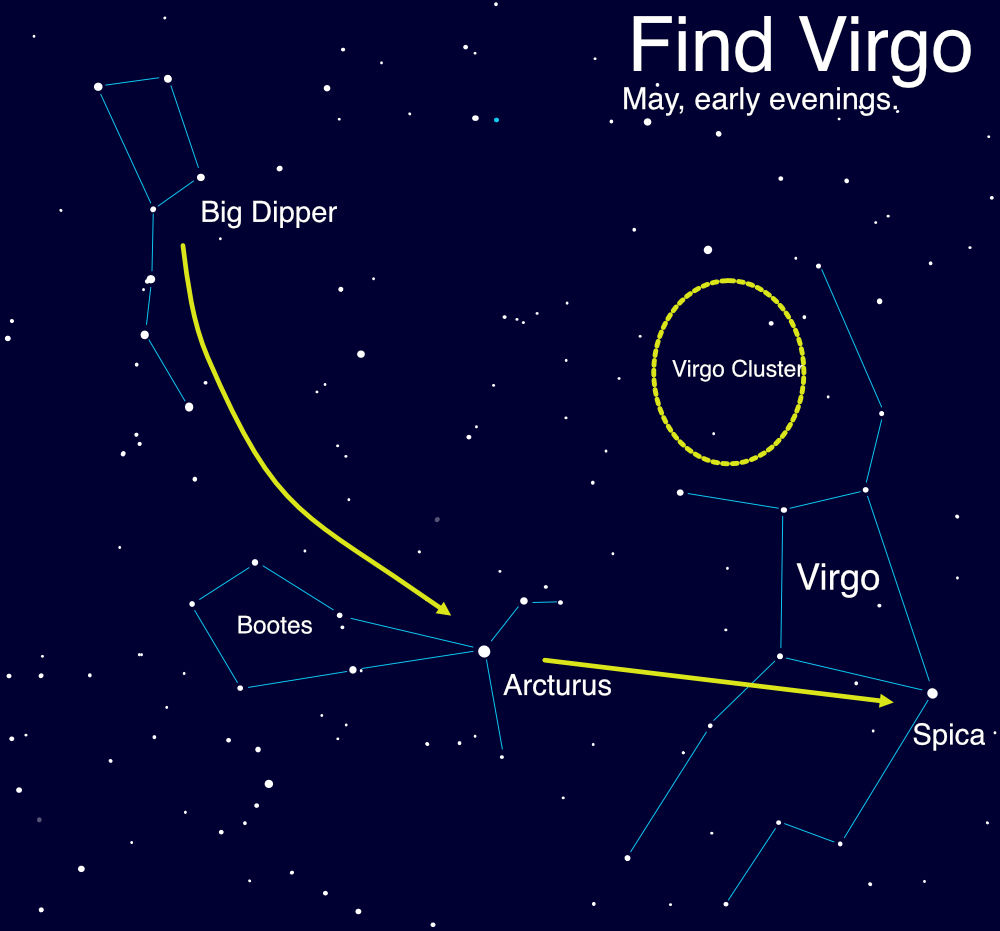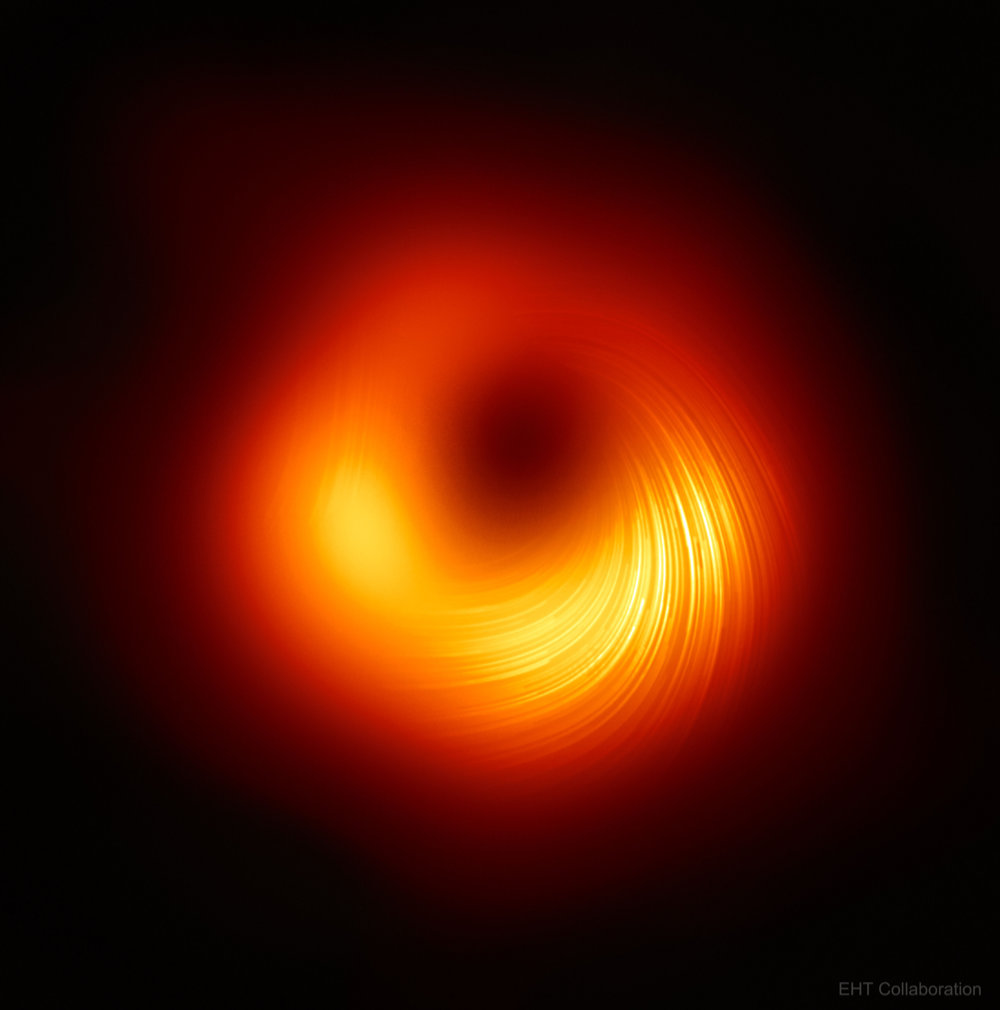Virgo's Galactic Harvest
May 2021 :
May is a good month for fans of galaxies, since the constellation Virgo is up after sunset and for most of the night, following Leo across the night sky. Featured in some ancient societies as a goddess of agriculture and fertility, Virgo offers a bounty of galaxies as its celestial harvest for curious stargazers and professional astronomers alike.

Virgo is the second-largest constellation and largest in the Zodiac, and easily spotted once you know how to spot Spica, its brightest star. How can you find it? Look to the North and start with the Big Dipper! Follow the general curve of the Dipper’s handle away from its “ladle” and towards the bright orange-red star Arcturus, in Boötes – and from there continue straight until you meet the next bright star, Spica! This particular star-hopping trick is summed up by the famous phrase, “arc to Arcturus, and spike to Spica.”
This large constellation is home to the Virgo Cluster, a massive group of galaxies. While the individual stars in Virgo are a part of our own galaxy, known as the Milky Way, the Virgo Cluster’s members exist far beyond our own galaxy’s borders. Teeming with around 2,000 known members, this massive group of galaxies are all gravitationally bound to each other, and are themselves members of the even larger Virgo Supercluster of galaxies, a sort of “super-group” made up of groups of galaxies. Our own Milky Way is a member of the “Local Group” of galaxies, which in turn is also a member of the Virgo Supercluster! In a sense, when we gaze upon the galaxies of the Virgo Cluster, we are looking at some of our most distant cosmic neighbors. At an average distance of over 65 million light years away, the light from these galaxies first started towards our planet when the dinosaurs were enjoying their last moments as Earth’s dominant land animals! Dark clear skies and a telescope with a mirror of six inches or more will reveal many of the cluster’s brightest and largest members, and it lends itself well to stunning astrophotos.
Virgo is naturally host to numerous studies of galaxies and cosmological research, which have revealed much about the structure of our universe and the evolution of stars and galaxies. The “Universe of Galaxies” activity can help you visualize the scale of the universe, starting with our home in the Milky Way Galaxy before heading out to the Local Group, Virgo Cluster and well beyond! You can find it at bit.ly/universeofgalaxies. You can further explore the science of galaxies across the Universe, along with the latest discoveries and mission news, at nasa.gov.

The first image of a black hole’s event horizon was taken in the center of one of the most prominent galaxies in Virgo, M87! This follow up image, created by further study of the EHT data, reveals polarization in the radiation around the black hole. Mapping the polarization unveils new insights into how matter flows around and into the black hole - and even hints at how some matter escapes! More details: apod.nasa.gov/apod/ap210331.html Credit: Event Horizon Telescope Collaboration



